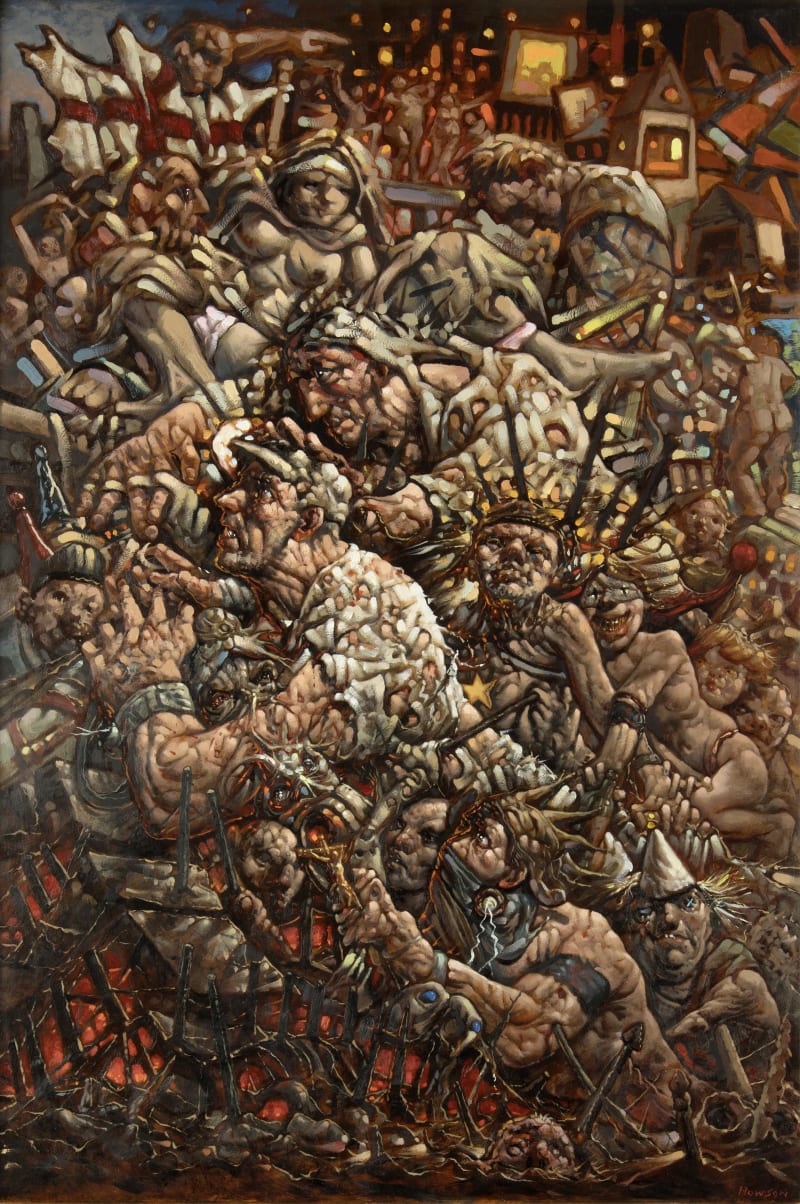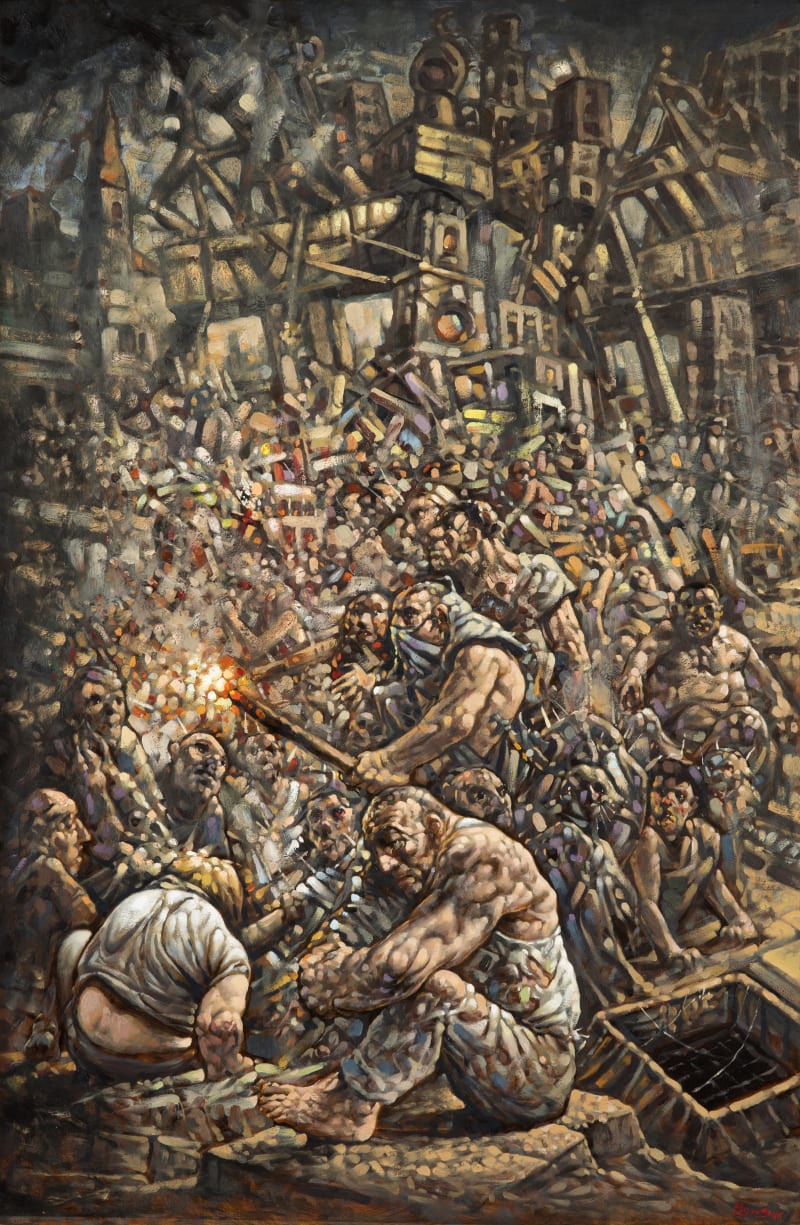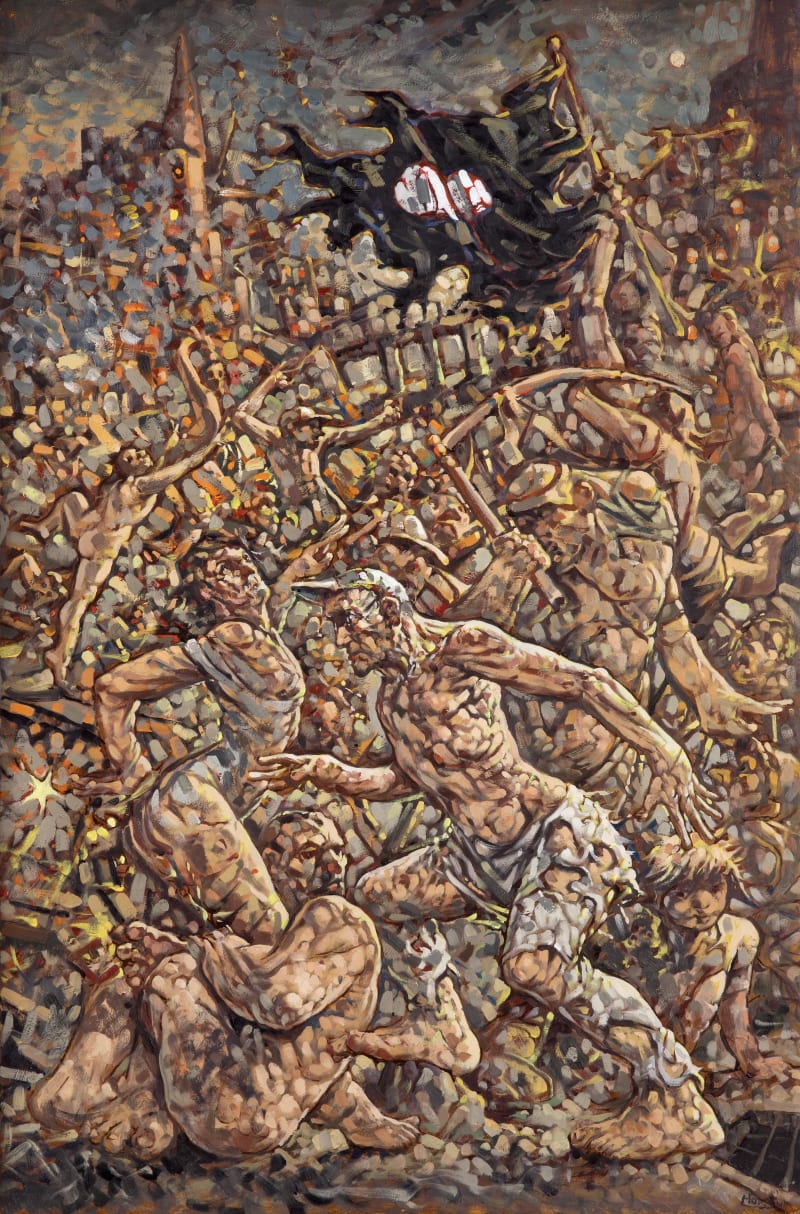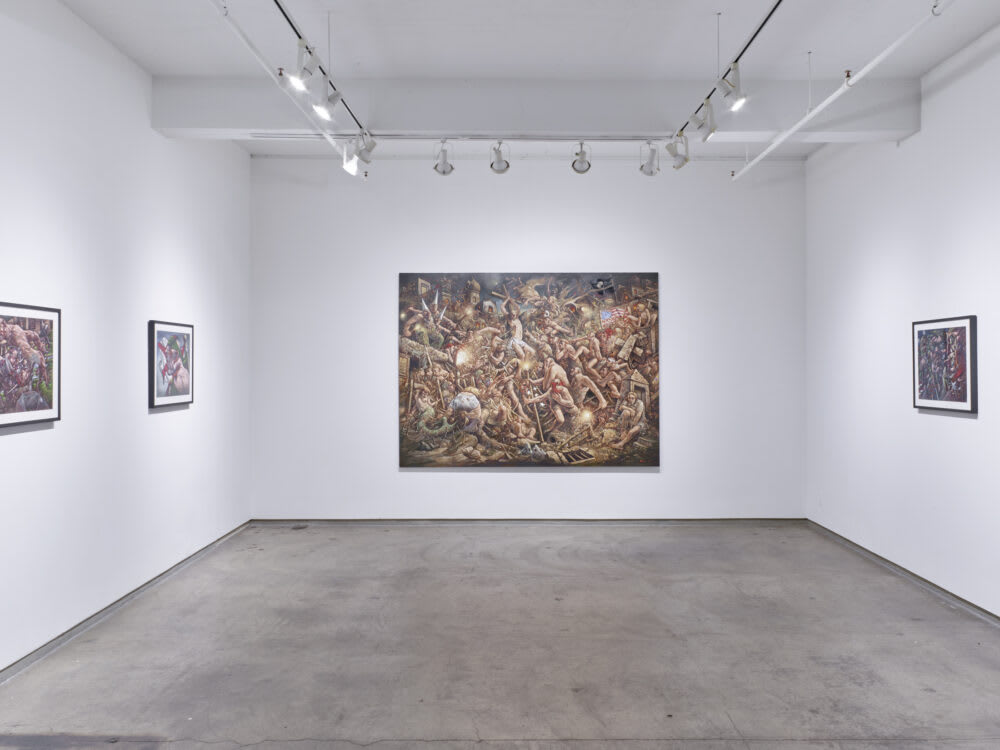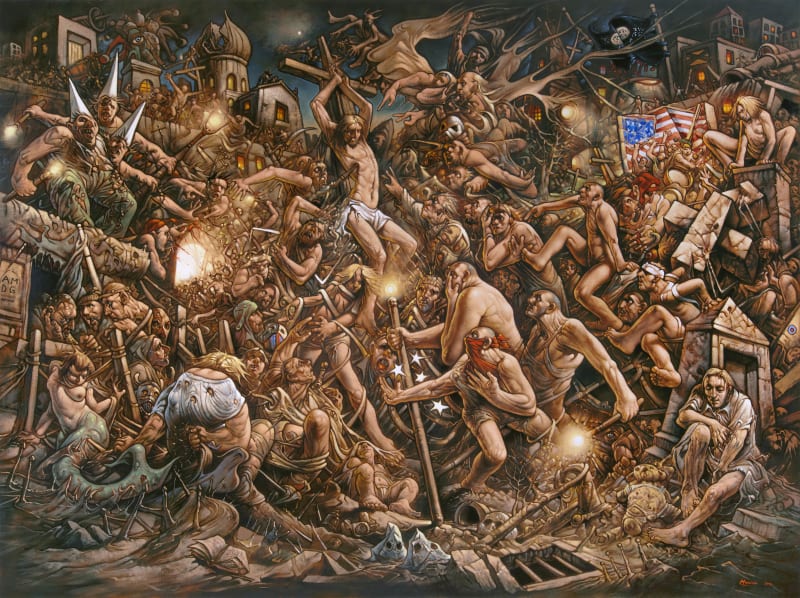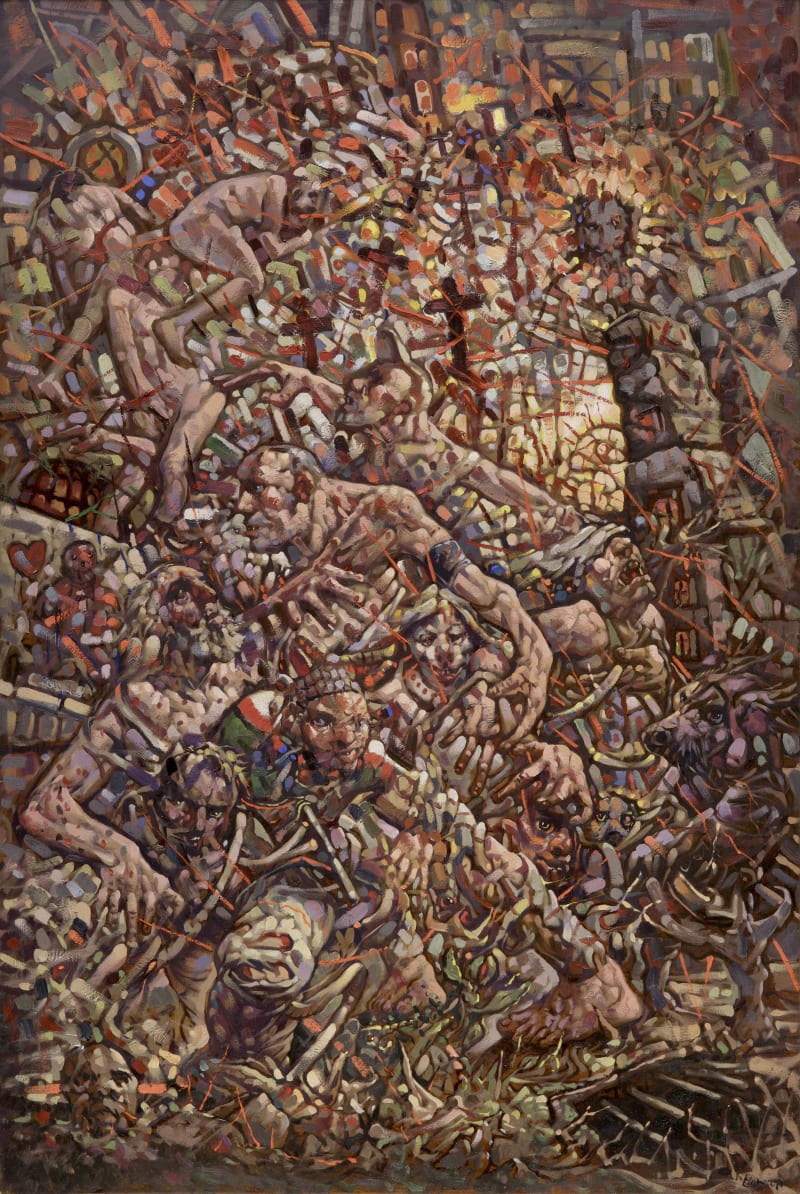Overview
Flowers Gallery is pleased to announce an exhibition by Scottish artist Peter Howson, a focal member of the group of young artists to emerge from the Glasgow School of Art during the 1980s dubbed the New Glasgow Boys, and one of his generation’s leading figurative painters. The title of the exhibition Prophecy refers to Howson’s apocalyptic vision of violence and inhumanity, which is conveyed in a new series of dramatic large-scale paintings and a sequence of smaller highly-worked allegorical panels.
Throughout his career, Howson has interwoven themes of conflict and destruction, human suffering and redemption in his imaginative portrayals of contemporary British society. Strongly influenced by witnessing the brutal and personally harrowing realities of combat as an official war artist commissioned by the Imperial War Museum, London during the Bosnian Civil War in 1993, Howson’s paintings have since been founded on increasingly nightmarish visions of chaos and atrocity, and populated by a cast of fantastic, grotesque characters.
The large painting Prophecy, which lends the exhibition its title, portrays a mob gathering in a dense and tumultuous throng around the central figure of Christ on the cross, surrounded by the desecrated remains of religious symbols and mythological beings. Half naked, or dressed in rags, they brandish torches and wave flags, engaging in seemingly mindless acts of violence or gesticulating in despair. Inspired in part by the abject inhabitants of the waiting room in Canto III of Dante’s Inferno (observed by Dante and his guide Virgil as the ‘sorry souls of those who lived without disgrace and without praise’), these characters appear to move with zombie-like compliance and ambiguous collective purpose.
In contrast to the swarming and cinematic scope of Prophecy, a similarly monumental painting titled Were War Der Tor, one of two new paintings reviving themes from the late-medieval allegory of the Danse Macabre, has a more contained and economic composition. The trio of powerful musclebound figures striding across the canvas, armed with archaic weaponry, are flanked by a dragon-like creature and watched by a small group of cloaked figures. The three protagonists are dressed in the khaki green of military fatigues, the exaggerated contours of their bodies defined with strong tonal contrasts of light and shadow. The title Were War Der Tor (which translates from the German as ‘Who was the Fool’) indicates the sociocritical dimension to Howson’s contemporary allegory.
Howson’s emphatic distortions of form, scale and color can be traced to the influence of German Expressionism, particularly the works of Otto Dix and Max Beckmann. The grotesquely contorted limbs of the ‘heroic’ characters seen in this series, which are based on Howson’s familiar motif of a giant or ‘colossus’, are drawn from his discomfort with machismo, in particular relation to his wartime experience.
Works
